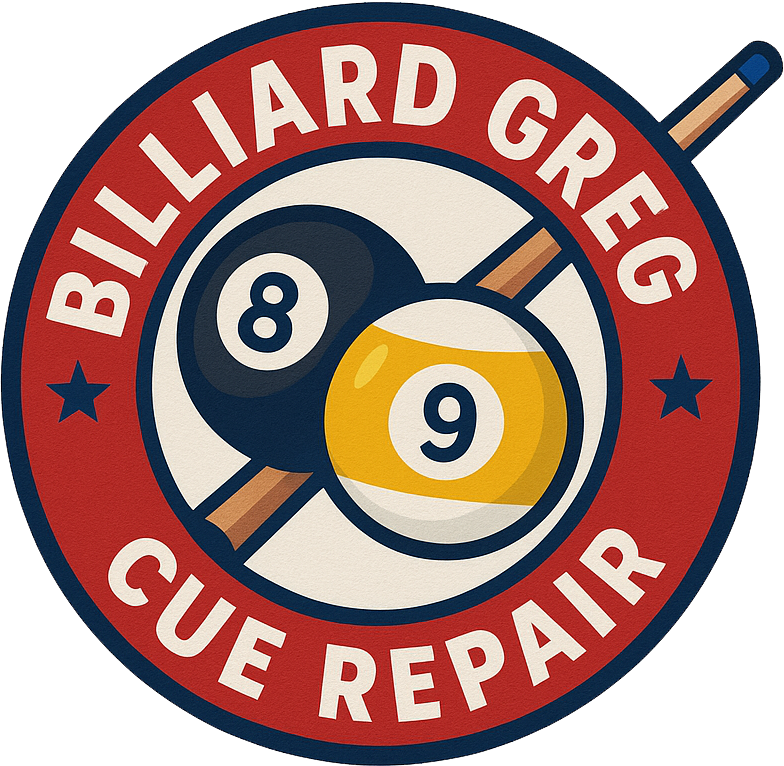When it comes to improving your game, few upgrades make as much difference as choosing the right cue tip. Whether you’re new to the sport, sharpening your competition skills, or maintaining your favorite cue, the tip is the very point where physics, feel, and style all collide. Yet with dozens of brands, hardness ratings, and player recommendations, the choice can feel overwhelming.
The truth? The best cue tip is the one that matches your stroke, your control, and your playing style.
This article breaks down what matters—and what doesn’t—when picking the perfect tip.
Cue Tip Hardness Levels
Cue tips typically come in five hardness categories: super soft, soft, medium soft, medium, medium hard, and hard (though most brands stick to soft, medium, and hard).
Soft Tips
- Absorb more energy
- Generate spin easily
- Offer maximum feel
- Require more maintenance
- Mush or mushroom more quickly
Ideal for: finesse players, heavy spin shooters, bar-table specialists.
Medium Tips
- Best all-around balance
- Good spin without excessive wear
- Consistent contact
- Moderate maintenance
Ideal for: league players, versatile playing styles, anyone unsure where to start.
Hard Tips
- Keep shape longest
- Transfer more energy directly
- Less spin, more power
- Crisp, firm hit
- Least maintenance
Ideal for: power breakers, stiff-stroke players, those switching from snooker cues or stiff house cues.
Single-Layer vs. Multi-Layer Tips
Single-Layer Tips
Examples: Triangle, Le Pro
- Made from a single piece of leather
- Traditional, firm hit
- Very affordable
- Require precise installation
- Less consistent between batches
Multi-Layer Tips
Examples: Kamui, Zan, G², Moori
- Stacked layers of leather
- Very consistent feel
- Longer lasting
- More expensive
- Less likely to glaze or mushroom
Why Player Preference Matters Most
Two players can shoot with the same cue, same shaft, same chalk – and still prefer totally different tips. That’s because cue tip choice is rooted in:
- Stroke mechanics
- Force of follow-through
- Table type (7-foot vs 9-foot)
- Chalk type
- Desired spin vs power
- Feedback sensitivity
Many amateur players try to copy a pro’s setup—only to find they don’t like it at all. That’s normal. Pros choose tips based on hundreds of hours of feeling how the cue responds in their hand.
What the Pros Use
I came across someone who started compiling a list of what some professional pool players use.
Alex Pagulayan – Ko Tip (S) for 1-pocket and Zan Hybrid Max for 9-ball (Japan)
Carlos Biado – Kamui Clear (H)
Django Bustamante – Elk Master
Efren Reyes – Elk Master (M)
Fedor Gorst – Kamui Brown (M)
Francisco Sánchez-Ruiz – Kamui Athlete (M)
Jayson Shaw – Tiger Sniper (considering Kamui)
Jeremy Jones – Techno Dud
Johann Chua – MY TIP (S) – China
Joshua Filler – HOW (M)
Mario He – Ko (M) on wood shaft
Scott “The Freezer” Frost – Precision Layered Tip
Skyler Woodward – Techno Dud
SVB (Shane Van Boening) – HOW (?)
Typically you’ll notice:
- Certain pros prefer soft, high-grip tips for finesse play
- Others want medium/hard tips for durability and break-heavy games
- Some brands are favored for their reliability (Kamui, Zan, Taom, G²)
But even among pros, there is no universal choice.
How to Know Which Tip Is Right for You
Here’s the simple test I use when helping players select a tip:
1. Do you use a lot of spin?
- Yes → Soft or Medium
- No → Medium or Hard
2. Do you like to “feel” the ball on your cue?
- Yes → Soft
- No → Medium or Hard
3. Do you break with your playing cue?
- Yes → Medium/Hard (or get a dedicated break tip)
4. Do you dislike constant maintenance?
- Yes → Hard or Medium
- No → Soft is fine
5. Do you play mostly 8-ball on bar tables?
- Soft or Medium Soft tend to help with heavy-chalked balls and tighter angles
6. Do you play mostly 9-ball or 10-ball?
- Medium or Medium Hard helps with long-table control and consistent stun/follow
Recommended Tips by Player Type
For Beginners
- Start with medium – it’s predictable and forgiving.
Great choices: Kamui Medium, Zan Medium, G² Medium, Triangle (properly shaped)
For Control & Spin Lovers
- Soft or Medium Soft
Great choices: Kamui Black Soft, Zan Soft, G² Soft
For Hard Hitters
- Medium Hard or Hard
Great choices: Zan Hybrid Max, Kamui Clear Hard, Samsara Hard (break/playing hybrid)
For Minimal Maintenance
- Hard
Great choices: Taom, Zan Hybrid, Kamui Clear Hard
Trust the Feel — Not the Label
Not all “soft” tips feel the same. One brand’s soft can feel like another brand’s medium. That’s why testing matters. When I replace tips for players, I keep notes on what they liked and what they didn’t, so we refine it each time.
If you’re unsure, start with medium. It’s the universal starting point and gives the clearest feedback about what direction to go next.
Final Thoughts
Picking the right cue tip isn’t about copying the pros – it’s about finding what feels natural in your hands. Whether you prefer a soft, control-heavy hit or a hard, crisp, power-driven stroke, the tip is simply a tool that helps your natural style shine.
If you ever want help choosing the right tip or trying something new, I’m always happy to look at your cue, your stroke, and recommend what will serve you best.

